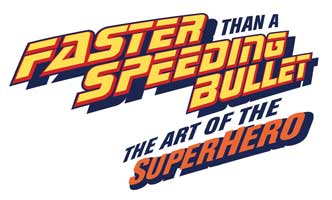
Ben Saunders knows a lot about superheroes. And now he’s putting that knowledge into crime-stopping action (well, maybe not the crime-stopping part).
Saunders, an associate professor of English, has been instrumental in bringing images of more than 150 of the world’s most famous superheroes to the UO. These images are on display at the Jordan Schnitzer Museum of Art in a special exhibit curated by Saunders called “Faster Than a Speeding Bullet: The Art of the Superhero.” The exhibit, which runs through Jan. 23, includes the full pantheon of super-beings: Superman, Batman, Wonder Woman, Spider-Man, the X-Men, the Fantastic Four and more.
For those more academically inclined, Saunders has also organized a conference in conjunction with the exhibit called “Understanding Superheroes,” which will take place Oct. 23-24. The conference will examine the cultural origins and significance of superheroes, and provide a venue for the analysis of the comic-book art form by academics and industry authors, creators and writers.
A lifelong comic-book aficionado, Saunders scoured the country for contributions. Much of the art produced by the industry hasn’t been preserved over the years — even by the comic companies themselves — so Saunders had to seek out private collectors willing to loan the material for the exhibit. In collaboration with the JSMA staff, Saunders also sequenced the material; decided where and how it is displayed; and organized, wrote and edited the catalog that accompanies the show.
The result is an exhibit containing significant pieces that span the duration of the industry’s existence, including 35 images of “golden age” art when comics were in their infancy (1938-1954), from artists like Lou Fine, Mac Raboy and Will Eisner.
Museum-goers can even see superheroes as rendered by their original artists, such as Joe Shuster, Bob Kane, H. G. Peter, Steve Ditko and Jack Kirby, as well as by more recent artists who have put their stamp on the genre, such as Frank Miller (Batman) and Neal Adams (Superman). Contemporary art is also included, such as two pages from “Watchmen” by Dave Gibbons and a page from “V for Vendetta” by Alan Moore and David Lloyd, two comics that made the leap to cinema in the last few years.
Saunders' work exemplifies the emerging field of comic studies, which he says is at a comparable stage to where fi lm studies was a few decades ago — it is now taken more and more seriously as a legitimate academic subject and has great potential for growth.
– Amanda Miles and Lisa Raleigh


 Watch Ian McNeely's talk at Google, Inc. and read a chapter from his book, Reinventing Knowledge.
Watch Ian McNeely's talk at Google, Inc. and read a chapter from his book, Reinventing Knowledge.